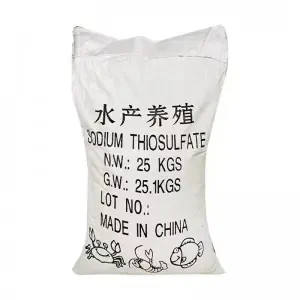



Effective Methods for Cleaning and Maintaining Swimming Pool Water Quality
Swimming Pool Water Purification Ensuring Clean and Safe Swimming Environments
Swimming pools are a source of enjoyment and relaxation for many, providing a refreshing escape during hot weather. However, maintaining clean and safe water in swimming pools is essential for health and safety. Water purification is vital in ensuring that pool water remains free from harmful bacteria, viruses, algae, and other contaminants. This article will explore various methods of swimming pool water purification, their benefits, and best practices to maintain pristine pool water.
Importance of Water Purification
Swimming pool water purification is crucial for several reasons. Firstly, unclean water can harbor pathogens that can lead to infections such as swimmer's ear, skin rashes, and gastrointestinal illnesses. Additionally, pool water can accumulate organic matter, such as leaves and debris, which can promote the growth of algae and other unwanted organisms, making the pool unattractive and unsafe.
Furthermore, properly purified water enhances the overall swimming experience. Clear, clean water is visually appealing and encourages more frequent use of the pool. Purified water also prevents unpleasant odors and the formation of cloudy water, further improving the swimming environment.
Common Methods of Water Purification
There are several methods employed for purifying swimming pool water, each with its distinct advantages and limitations. Below are some of the most common techniques
1. Chlorination This is the most widely used method for pool water purification. Chlorine effectively kills bacteria and other pathogens, ensuring the water remains safe for swimmers. Chlorine can be added in various forms, such as tablets, granules, or liquid. However, it is essential to monitor the chlorine levels regularly, as too much chlorine can cause irritation to the skin and eyes.
2. Saltwater Systems Saltwater pools utilize salt chlorine generators to produce chlorine from the salt dissolved in the water. This method reduces the need for added chemicals, providing a gentler swimming experience while still maintaining effective sanitation. The downside is that initial setup costs can be higher than traditional chlorinated pools.
3. Ultraviolet (UV) Light UV purification involves exposing pool water to ultraviolet light, which effectively destroys bacteria and viruses without the use of chemicals. This system is often used as a complementary treatment alongside chlorination to enhance water quality and reduce the amount of chlorine needed.
4. Ozone Purification Ozone generators create ozone gas, which is then introduced into the pool water. Ozone is a powerful oxidizer that kills bacteria and breaks down organic matter. This method significantly reduces the need for chlorine, although it requires careful monitoring and may involve additional equipment.
swimming pool water purification

5. Filtration Systems Mechanical filtration is vital for removing larger particles and debris from pool water. Various types of filters, such as sand, cartridge, and diatomaceous earth filters, can be used to ensure clear water. Regular maintenance and cleaning of filtration systems are necessary to maximize their efficiency.
Best Practices for Pool Water Purification
To maintain clean and safe swimming pool water, it is essential to adopt best practices alongside purification methods
- Regular Testing Continuously monitor and test pool water for pH, chlorine levels, and other chemical balances. Maintaining optimal levels (pH between 7.2 and 7.6) is essential for effective disinfection and comfort.
- Routine Cleaning Skim the surface of the pool regularly to remove leaves and debris. Vacuum the pool floor to eliminate settled dirt and sediment. This helps prevent algae growth and keeps water clear.
- Shock Treatment Periodically, perform shock treatments to eliminate contaminants and restore chemical balance. This process involves adding a higher concentration of chlorine to the water to break down persistent organic matter.
- Maintain Water Circulation Ensure that pool pumps and filters are running efficiently to promote proper circulation and purification of the water.
- Educate Swimmers Encourage swimmers to practice good hygiene before entering the pool. Showering before swimming can significantly reduce the introduction of contaminants into the water.
Conclusion
In conclusion, swimming pool water purification is essential for maintaining a safe and enjoyable swimming environment. By employing effective purification methods, adhering to best practices for maintenance, and regularly monitoring water quality, pool owners can ensure their pools remain a pristine oasis for relaxation and fun. With proper care and attention, swimming pools can offer years of enjoyment while keeping swimmers safe and healthy.
-
Why Sodium Persulfate Is Everywhere NowNewsJul.07,2025
-
Why Polyacrylamide Is in High DemandNewsJul.07,2025
-
Understanding Paint Chemicals and Their ApplicationsNewsJul.07,2025
-
Smart Use Of Mining ChemicalsNewsJul.07,2025
-
Practical Uses of Potassium MonopersulfateNewsJul.07,2025
-
Agrochemicals In Real FarmingNewsJul.07,2025
-
Sodium Chlorite Hot UsesNewsJul.01,2025










